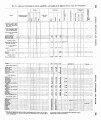| OCR Text |
Show 1 200 UTAH BUPERINTENPENCY. then the ocenpants of every portion of this Territory, enjoying the same rights and privileges as the Indians east of the Mississippi river. The United States accepted of the cession, subject to all of the just rights of this third party then in the actual possession, hut who was not a party to the treaty. Respectfully submitted. 'JAMES DUANE DOTY, Superintmdent. . Hon. W. P. DOLE, Commissioner of Indian Affaim. GREATS ALTL AKEC ITY,U TAHT ERRITORY, September 12,1862. SIR: On the 20th of August1 left this city to execute your orders, pre-viously ~.eceivedt, o make an examination of the valleya of the Uintah river and its tributaries, wilh a view to their adaptahility for a settlement therein of the Utih Indians. I returned yesterday, having been as far east as Colorado, or , Green river, at the mouth of the Uintah. Accompanying me were C. A. Hun-tington, as Indian interpreter, S. M. Johnson, as guide, Caleb Rhodes and Eiehard Pangborn, as guards. These men were previously engaged for the expedition by your direction. Most of them were somewhat acquainted with the country we went to examine, having hunted and trapped therein: I took thc ambulance to Rhodes prairie, a valley in the Wausatch moun-tains, forty miles southeast of this city, add containing the extreme settlements in that direction. To this place there is a good road. From thence we rode horseback, and used pack animals. We travelled east from Rhodes prairie, up Beaver meek, a tributary of Weber river, for ten miles, where we croased the' "divide," a very slight elevation hetween the waters of Webex and Tiinpanogos ' or Provo river. Four miles further southeast brought us to Provo river, up which We passed for five miles, then followed up a branch to the southeast fbr about five miles to the summit of the Wausatch mountains. and the "divide" between tlie waters of the Great Salt lake and thase flowing &to the Gulf of California, throuch Green and Colorado rivers. On this summit is a beautiful valley, in size about one by two miles, finely watered by springs and creeks, and-snr-rounded with timber. To this point a good Wagon road is practicable. We descended from this summit southeast, through a steep caiion, the best pass we could find, but entirely too steep for a road to be built, for six miles, and reached a branch of the northcrn'and principal fork of the Duchine river, along which iy a valley of excellent land, very suitable for cultivation, about two miles wide by four miles long. ,This branch empties into the main stream, ten miles northeast, from which point the river runs a little south of east. From this junction, extending down the river about sixteen .miles, is a valley, varying from two to six miles in width, of the very best uality of land, extremely well watered aild timbered. On the blues on either s$e are broad table-la.nds of fine stock grass.^ Everything indicates for this place a warm climate and mild winters. It is by far the firiest sectim of country we saw on the trip. In the bluffs along the b&th side of this valley are vast quantities of fine red sandstone, a specimen of, which I band you. From this, to designate the valley, we called it the "Red Butte valley." Below thisvalley, for fifteen miles, the bottom is narrow, and can only be cultivated in small pieces. Here a large, fine stream comes in from the north, on which and its branches the mcn mith me say are small hut good valleys, fit forcultivation. From this stream, down the river for eighteen miles 'to where this fork empties into Duchine river, the valley is from one and a half , to two miles wide, generally good soil, and portions of it can be irrigated and cultivated. From this junction to the junction of the Duchine with the Uintah river, the bottom contiirocs from one to two miles wide. Some portions of it. > |




















































































